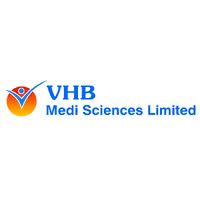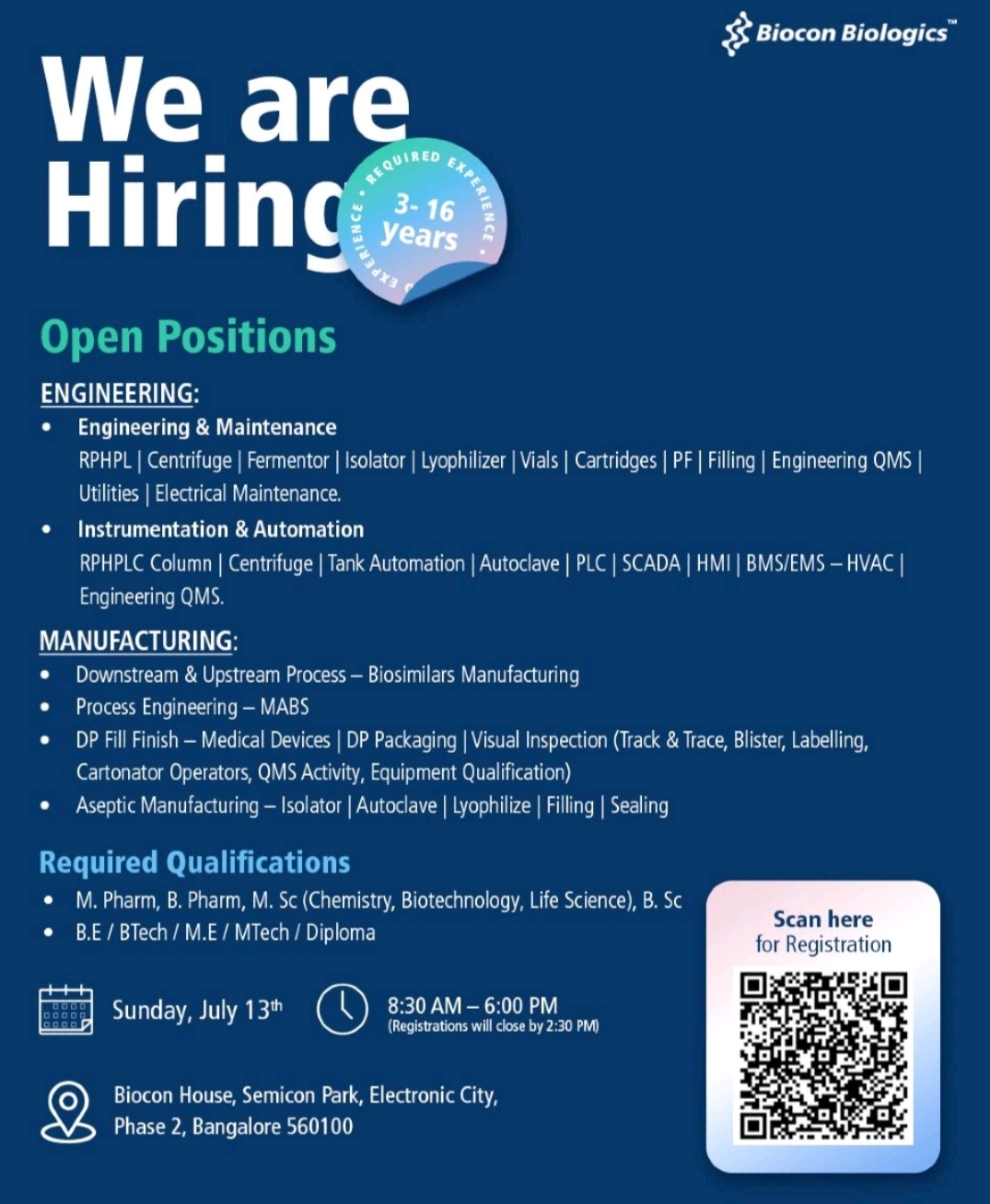Intas Pharmaceuticals Walk-In Drive at Plasma Fractionation Centre – Ahmedabad (2nd August 2025)
Are you ready to take the next step in your pharmaceutical career? Intas Pharmaceuticals Ltd., a globally renowned pharmaceutical organization, is conducting a Walk-In Drive for various positions at its Plasma Fractionation Centre in Matoda, Ahmedabad on Saturday, 2nd August 2025, from 10:00 AM to 05:00 PM.
🌐 About Intas Pharmaceuticals
Intas is a leading multinational company involved in pharmaceutical formulation development, manufacturing, and marketing. With a presence in over 85 countries, Intas continues to grow at an impressive CAGR of 20%. Approximately 70% of its revenues come from highly regulated markets such as the EU and the US. The company is committed to health, happiness, and hope through innovation and quality.
📌 Open Positions & Eligibility
1. Executive – Quality Control (Microbiology)
- Qualification: M.Sc. in Microbiology
- Experience: 2 to 5 years
- Location: Plasma Fractionation Unit, Ahmedabad
2. Senior Executive – Quality Control (Microbiology)
- Qualification: M.Sc. in Microbiology
- Experience: 6 to 10 years
- Location: Plasma Fractionation Unit, Ahmedabad
3. Apprentice – Engineering
- Qualification: Diploma/B.E. in Mechanical or Electrical Engineering
- Experience: Fresher
- Location: Plasma Fractionation Unit, Ahmedabad
4. Senior Executive – Engineering
- Qualification: B.E. / B.Tech / M.Tech (Mechanical)
- Experience: 6 to 10 years
- Location: Plasma Fractionation Unit, Ahmedabad
📝 Important Instructions for Candidates
- Carry an updated CV, educational and experience documents, photocopies of final year mark sheets, degree certificates, and latest salary slips/CTC break-up.
- Freshers are welcome for apprentice roles.
- Candidates with formulation plant experience in regulated markets (USFDA/MHRA/EU) will be preferred.
- Must be open to working in shifts.
- Aadhar card is mandatory for walk-in candidates.
- Email your CV to: careers_pfu@intaspharma.com
📍 Interview Venue & Schedule
📅 Date: Saturday, 2nd August 2025
🕙 Time: 10:00 AM to 05:00 PM
📌 Venue:
Intas Plasma Fractionation Centre – Matoda, Ahmedabad
Plot No. 496/1A&B, Sarkhej – Bavla National Highway,
Opp. Gujarat Pharma Techno Park,
Village Matoda, Taluka Sanand, District Ahmedabad, Gujarat – 382213
🚫 Disclaimer
Intas Pharmaceuticals does not charge any fees for job applications, interviews, or testing. Avoid any third-party agents or fraudulent calls/emails.
💼 Why Join Intas?
- A certified Great Place To Work
- Exposure to international regulatory standards
- Opportunities for career growth and innovation
Don't miss this chance to be part of a leading name in global pharmaceuticals. Mark your calendar and attend the walk-in with confidence!



















